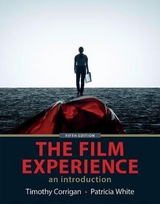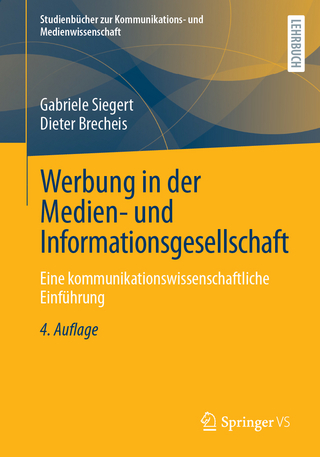
The Film Experience
Bedford/Saint Martin's (Verlag)
978-1-4576-6354-3 (ISBN)
- Titel erscheint in neuer Auflage
- Artikel merken
Timothy Corrigan and Patricia White’s classroom favorite is both authoritative and joyful about watching, analyzing, and understanding film. With clips from classic and contemporary films (Rear Window, Life of Pi, Moonrise Kingdom, Chinatown, and many others) plus hundreds of movie images and other graphics, the thoroughly revised new edition covers everything from editing to cinematography to narrative genres, all in a cultural context that reinforces why films and film study matter. The book's features—Form in Action, Film in Focus, and Concepts at Work —combine text, stills, and links to videos online to explore specific films, scenes, and trends in depth.
Part One: Cultural Contexts: Watching, Studying, and Making MoviesIntroduction: Studying Film: Culture and Experience Why Film Studies Matters Film Spectators and Film Cultures Form in Action Identification, Cognition, and Film Variety Film in Focus The 400 Blows: An Auteur’s Film Experience (1959) The Film Experience.- Chapter One: Encountering Film: From Preproduction to Exhibition Production: How Films Are Made Preproduction Production Postproduction Distribution: What We Can See Distributors Ancillary Markets Distribution Timing Film in Focus Distributing Killer of Sheep (1977) Marketing and Promotion: What We Want to See Generating Interest Advertising Viewing Cue: Man of Steel (2013) Form in Action The Changing Art and Business of the Film Trailer Word of Mouth and Fan Engagement Movie Exhibition: The Where, When, and How of Movie Experiences The Changing Contexts and Practices of Film Exhibition Film in Focus Promoting The Blair Witch Project (1999) Technologies and Cultures of Exhibition Film in Focus Exhibiting Citizen Kane (1941) The Timing of Exhibition Part Two: Formal Compositions: Film Scenes, Shots, Cuts, and Sounds.- Chapter Two: Mise-en-Scène: Exploring a Material World A Short History of Mise-en-Scène Theatrical Mise-en-Scène and the Prehistory of Cinema 1900;1912: Early Cinema’s Theatrical Influences 1915–1928: Silent Cinema and the Star System 1930s–1960s: Studio-Era Production 1940–1970: New Cinematic Realism 1975–Present: Mise-en-Scène and the Blockbuster The Elements of Mise-en-Scène Settings and Sets Scenic Realism and Atmosphere ► Viewing Cue: Life of Pi (2012) Props, Actors, Costumes, and Lights Film in Focus Making Sense of Mise-en-Scène in Do the Right Thing Space and Design Form in Action Mise-en-Scène in Fantastic Mr. Fox (2009) Making Sense of Mise-en-Scène Defining Our Place in a Film’s Material World Interpretive Contexts for Mise-en-Scène Film in Focus Naturalistic Mise-en-Scène in Bicycle Thieves (1948) Spectacularizing the Movies.- Chapter Three: Cinematography: Framing What We See A Short History of the Cinematic Image 1820s–1880s: The Invention of Photography and the Prehistory of Cinema 1890s;1920s: The Emergence and Refinement of Cinematography 1930s;1940s: Developments in Color, Wide-Angle, and Small-Gauge Cinematography 1950s 1960s: Widescreen, 3-D, and New Color Processes 1970s–1980s: Cinematography and Exhibition in the Age of the Blockbuster 1990s and Beyond: The Digital Future The Elements of Cinematography Points of View Four Attributes of the Shot ► Viewing Cue: Touch of Evil (1958) Form in Action Color and Contrast in Film Animation and Visual Effects ► Viewing Cue: Rear Window (1954) ; Viewing Cue: The Battle of Algiers (1967) Making Sense of the Film Image Defining Our Relationship to the Cinematic Image Interpretive Contexts for the Cinematic Image Film in Focus From Angles to Animation in Vertigo (1958) Film in Focus Meaning through Images in M (1931).- Chapter Four: Editing: Relating Images A Short History of Film Editing 1895;1918: Early Cinema and the Emergence of Editing 1919–1929: Soviet Montage 1930&;1959: The Hollywood Studio Era, Sound, and Continuity Editing.
| Erscheint lt. Verlag | 24.11.2014 |
|---|---|
| Sprache | englisch |
| Themenwelt | Kunst / Musik / Theater ► Film / TV |
| Sozialwissenschaften ► Kommunikation / Medien ► Kommunikationswissenschaft | |
| ISBN-10 | 1-4576-6354-6 / 1457663546 |
| ISBN-13 | 978-1-4576-6354-3 / 9781457663543 |
| Zustand | Neuware |
| Informationen gemäß Produktsicherheitsverordnung (GPSR) | |
| Haben Sie eine Frage zum Produkt? |
aus dem Bereich



